Email Marketing Basics: Everything You Need To Know
Digital marketing is an essential strategy that companies have in their overall marketing in order to thrive online.
Customers’ focus has turned to other devices and modes of communication as a result of the advancement of various technologies.
Businesses have been forced to focus on social media marketing, content production, PPC promotions, and email marketing as a result. Today, we’ll discuss email marketing basics and why it remains a strong platform for business promotion.
You can learn how to create email marketing campaigns, what types of campaigns are popular, and what are the most important tips to keep in mind throughout the process. Let’s jump right into the details!
What is email marketing?
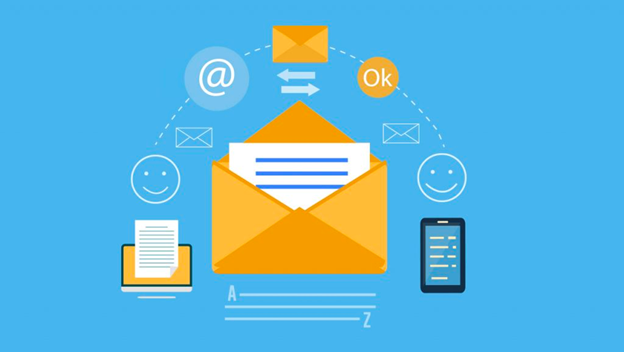
Email marketing is the practice of communicating with your prospects or subscribers who have agreed to share their email addresses with you.
You can send them various types of emails to promote your company after obtaining their email address with their permission. The entire process is replicated indefinitely to reach as many email subscribers as possible.
It is one of the most successful marketing strategies because a person who chooses to share their information with you indicates that they are interested in your blog or company and what it has to offer.
With this in mind, it is obvious that the person is also eager to purchase your goods or services, which explains why email marketing has such high conversion rates. Email marketing is an effective marketing technique. Many companies use it, and you can, too, regardless of your industry.
Why do you need email marketing?

If you’re wondering why email marketing is important for your blog, there are a few things you should know right away:
-
Building a company that is perceived as an influential brand is a long-term growth strategy.
-
If you want to accomplish this aim without making a substantial financial commitment, it will take time and a great deal of patience and determination.
-
Building a large email list is the first move you can take if you want to create a loyal customer base without investing a lot of money. It will encourage you to gradually develop your company with an email list full of people who want to help you.
-
This is also a great way to raise the number of repeat customers. Building a community of loyal and returning customers is critical, and a large email list combined with an effective marketing campaign will make this a reality.
One of the most effective marketing channels is email marketing. This is because the person who has subscribed to your mailing list is already interested in your service or product.
Furthermore, email correspondence is considered private, implying that an individual has some degree of trust in your business.
Every individual has an average of 1.7 email addresses. This equates to billions of email addresses worldwide. There will be over 4,1 billion email users by the end of 2021. Furthermore, since the majority of email accounts are connected to mobile devices, people are now more easily reachable via them.
When all of these factors are considered, it is clear how effective the right email marketing strategy can be. Let’s get into specifics on what types of email marketing you can create and run.
Important types of email marketing campaigns
There are many types of email you can use depending on your marketing goals:
Newsletter email
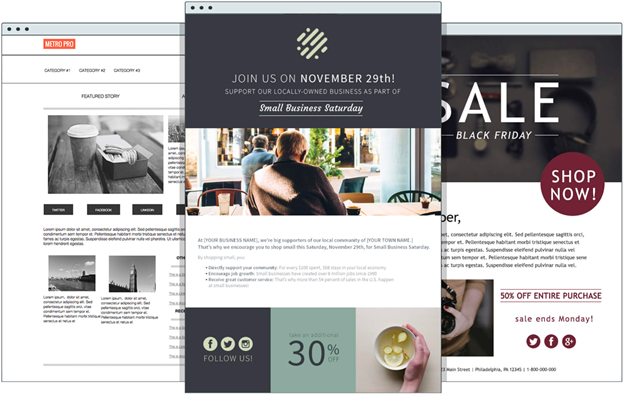
This is a form of email about the latest news published on your website. This strategy is typically used by websites that rely mainly on ad revenue for profit. If you fall into this category, a newsletter is a good strategy for increasing consistent traffic to your blog or website.
Offer email

Businesses that provide email deals are usually in the e-commerce sector. Those who are on your mailing list will benefit from specific deals from your company. This type of strategy benefits all parties. The company will increase the number of products sold, and the customers will get to buy the products they need at a discounted price.
Brand awareness email
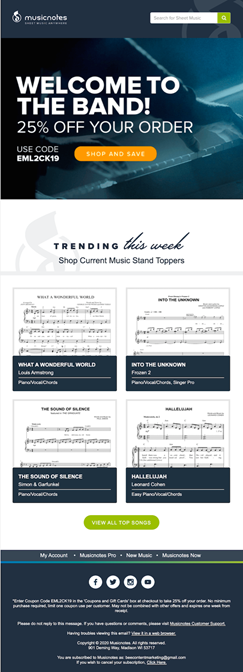
This is often an invitation sent to the whole email list. If your company is planning an event, such as a physical product unveiling or a webinar, this is the starting point that will dramatically raise awareness. This is a combination of a newsletter and an offer email, when people are invited to participate in an event in which they can either just enjoy or make a purchase.
Announcement email
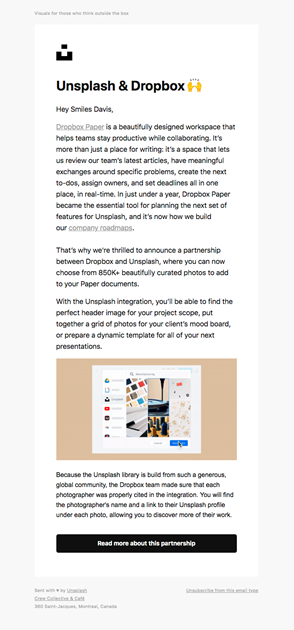
This method is ideal as a customer retention technique. If you are offering a service to your customers, this is the perfect way to inform them about new product functionality. Even though showrunners are the primary users of this form of email, it has a position in businesses that provide software resources to their customers. For example, you can boost the launch of a new software tool in your suite by just informing your email list about it.
Trigger email
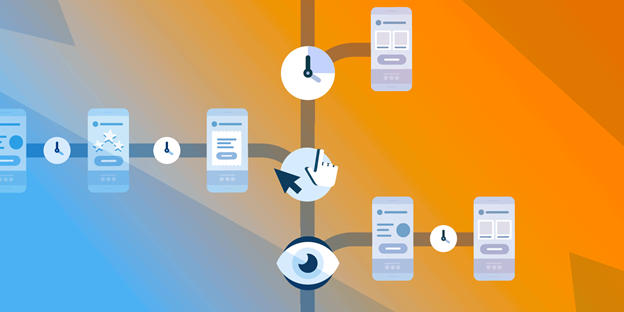
This is an excellent strategy for those who abandon their shopping cart. Create an email trigger that would remind them that they abandoned the shopping cart and did not complete the order.
The best part is that this method can be fully automated while still improving customer conversion rates. You can cycle multiple types of emails sent to your subscribers, depending on the objectives you’ve set for your company, to monitor the effectiveness of your email marketing.
But, before we get into the specifics of email campaign monitoring, let’s talk about email marketing automation since this is the part of email marketing where monitoring is the most essential.
The Importance of Email marketing Automation
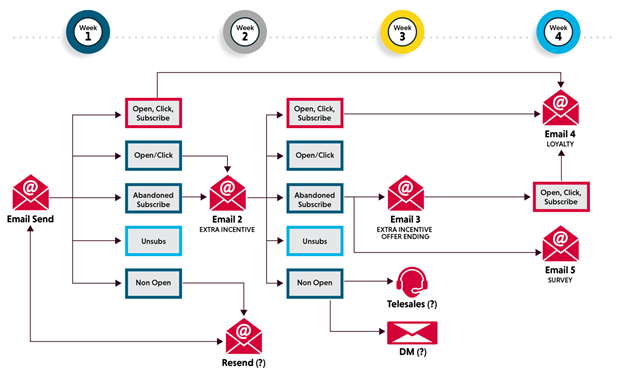
Email marketing automation, in a nutshell, refers to software that automates email marketing processes for your business.
The app is intended to assist you in prioritizing and carrying out your marketing activities in a more organized and effective manner. The ultimate aim of email marketing is to increase sales for your company. To do so, you must drive traffic to our website, turn that traffic into leads, and close those leads into customers.
The consideration and conversion stages of a marketing funnel are where email marketing automation really shines. Thousands of marketers depend on email marketing to generate leads these days. They send out blast email after blast email to their entire list of prospects and customers, hoping that the message will resonate with some of them and entice them to buy. But does it really work? It’s difficult to say.
Perhaps it works for you occasionally, but the truth is:
-
You’re squandering your precious time and resources by appealing to people who might or may not be interested in what you’re offering.
-
You could be destroying your list (i.e., annoying your subscribers and causing them to leave you with no further opportunity to market to them in the future) That does not appear to be a successful marketing strategy, in my opinion. Or, at the very least, not one that I would want to use.
This is why email marketing automation comes into place. Email marketing automation enables you to cultivate your leads across the entire purchasing process, delivering highly targeted, customized messages that address their unique purchase barriers.
As an example, consider the following simple automated email workflow:
-
Step 1: You send an invitation email to a specific list of contacts inviting them to download your new ebook.
-
Step 2: You give a thank-you note to anyone who downloaded the deal.
-
Step 3: A few days later, you send a follow-up email to the list of people who downloaded the ebook, offering them a case study on the topic.
Finally, when anyone downloads the case study, the sales team will be notified so that they can follow up with them (this prospect is up to this point much more qualified and is more likely to proceed further in the buying process).
Put yourself in the shoes of your prospect for a moment. If you were getting updates from a company about their goods or services, wouldn’t you choose emails like the ones above instead of blasts that you can tell are being sent to thousands of other people?
It has a personalized feel to it. It appears to be personalized to you and how you communicate with the business. It increases your likelihood of trusting the business. And, basically, it makes you more likely to buy, doesn’t it?
There you have it! Using an automated system to generate revenue for your business. This is the basis for marketing automation. To give you the opportunity, as a marketer, to target your contacts and send them content based on their actions.
You provide them with the details they need at the time they need it. You’re making it easier for them to make a purchase. As a result, the conversion rates (and therefore revenue) will rise.
Email Marketing Metrics to Measure Success

How do you know if your email marketing campaigns are actually working and producing results if you are not monitoring analytics?
Without email marketing analytics, it is just not possible. Set KPIs for yourself and your team each time you start a new email marketing campaign before you launch it. This ensures that you can track your progress, which will improve your overall plan in the long run.
Here are some of the most important email KPIs to track that will help you measure your email marketing success:
-
Bounce rate: the percentage of total emails sent that failed to deliver.
-
Open rate: The percentage of sent emails that were opened.
-
Click-through rate (CTR): The percentage of subscribers who click on one or more links in an email.
-
Conversion rate: the percentage of email recipients who open your email, click a link, and perform the desired action, such as creating a lead magnet or making a purchase.
-
Unsubscribe rate: the percentage of subscribers who unsubscribed from your email list after receiving a specific email.
-
List growth rate: The rate at which new subscribers join your email list.
-
Share rate: the percentage of subscribers who forward your email.
-
Sender score/reputation: the likelihood that an email provider will block, send, or label your email as spam.
These are some of the most important metrics that you should keep an eye on. There are others mentioned in the article linked just above, and you should take your time to get familiar with all of these metrics so that you can know whether the money you spend is working as you expect.
How to create your email marketing campaign

The next step is to learn how to create an email marketing campaign. Higher click-through and conversion rates are difficult to achieve, but with a few optimization tips, it is possible. Here’s how to configure your email before you hit the send button.
Subject line
The single most important thing you need to concentrate on is creating an appealing subject line. Over time, you can try to be as imaginative as possible with your email names. It is the first thing a recipient sees, and it should be designed to pique their interest and entice them to open the email.
The more interesting your email subject line is, the higher your open rates will be. It takes time to find the sweet spot, so try out various subject lines and see which works best.
Email length and language
Email content is different from blog content in a way that it should convey a straightforward and concise message. It should take as little reading time as possible so that the reader can determine whether or not to click on the embedded link.
Imagery
Include imagery in your email as images pique people’s interest. You should still make photos that highlight the deal you’re sending to your customers. Remember to use small-size images, as many people will be receiving your email on their smartphones and tablets.
Unsubscribe button
This gives your subscribers the ability to opt out, but it is also a valuable feature since it prevents you from being thrown in the spam folder or getting in trouble with anti spam laws.
Call-to-action
The recipient of your email should already understand what your email is about based on the subject line and a brief explanation. He is ready to act in a matter of seconds, so include a direct call-to-action in your email and make it simple to click the link.
Personal approach
Avoid sending emails as a company. The recipient should be aware of who is sending the email, but the whole procedure should be carried out using an employee’s mailing address. The email recipient may have the impression that an individual rather than a corporation is approaching him or her. It will increase your email click-through rates.
Content relevancy
Always send content that is relevant to the subscriber’s interests. Taking any other action and attempting to trick people will quickly backfire and result in a decrease in your subscriber numbers.
Landing Page
Optimize your landing page since that’s where your email recipients will be directed to after they click on your email link. Landing pages that are hard to navigate will confuse customers and hurt your conversion rates.
Simply make the page user-friendly. Make the strategy’s call-to-action button stand out and provide some extra specifics to back up the information in the email. Don’t overcrowd the landing page with elements, as this will distract the customer.
By following these tips, you will be able to create an effective email marketing campaign. The more focused you are on perfecting your email elements, the better your results will be.
Use AVADA Email Marketing To Run and Manage Your Email Campaigns
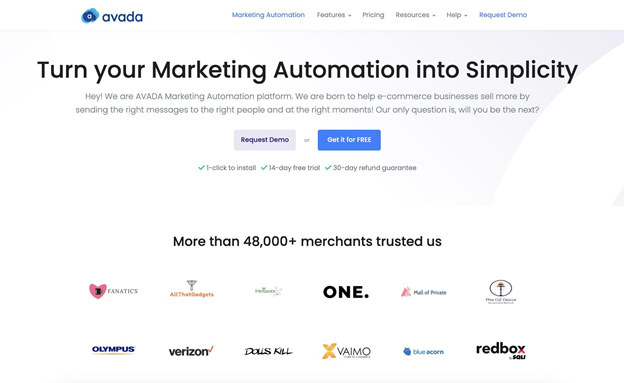
If you want to run effective mass email marketing campaigns, using Gmail or Outlook just won’t work. These tools don’t have the necessary features that allow you to create, manage and run your campaigns efficiently. This is not to mention that you will need an email marketing tool if you want to automate any part of your email marketing processes.
There are many tools on the market that can help you with your email marketing campaigns. AVADA Email Marketing is among the most popular tools and is very suitable for small-and-medium sized businesses and startups thanks to its affordability, rich functionality, and user-friendliness.
AVADA Email Marketing provides you with features to:
-
Build emails with its drag-and-drop editor.
-
Segment subscriber lists
-
Send automated emails
-
Monitor and evaluate campaigns with advanced data tracking
Pricing starts at only $9/month for full features, 1,000 subscribers, and unlimited emails. You can also use the forever-free plan to test features before you decide to make any financial commitments. AVADA support reps are always available and supportive, so when you run into any difficulties using the app, you can reach out to them and get the issues resolved in no time! Learn more about the app and get in touch with support rep for more information at this link!
Final words
That’s it! I hope this article has provided you with valuable information about the basics of email marketing. Please feel free to leave comments below for a further discussion on this topic!
New Posts

How To Set Up Google Analytics 4 For Your BigCommerce Store






